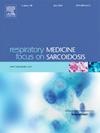Drug-induced cough risk: A pharmacovigilance study of FDA adverse event reporting system database
IF 3.1
3区 医学
Q2 CARDIAC & CARDIOVASCULAR SYSTEMS
引用次数: 0
Abstract
Background
Drug-induced cough is a prevalent adverse drug reaction; however, the risk of cough associated with various drug classes in real-world settings has not been thoroughly elucidated.
Objectives
This study aims to systematically identify drug risk signals that are significantly associated with cough through the FAERS database, covering data from the first quarter of 2004 to the fourth quarter of 2024. The findings will provide evidence-based support for clinical medication safety and individualized monitoring.
Methods
We extracted reports in which cough was identified as the primary adverse event (AE) from the FAERS database. After data cleaning to exclude duplicate and non-drug-related records, use the Reporting Odds Ratio (ROR) and Proportional Reporting Ratio (PRR) for disproportionality analysis. Standardize the Preferred Term (PT) for cough using MedDRA 27.1. Additionally, classify each drug using the World Health Organization's Anatomical Therapeutic Chemical (ATC) classification system.
Results
This study identified 1951 drugs associated with the AE of "cough," affecting a total of 247,158 patients. The drug categories most commonly linked to cough included antineoplastic and immunomodulating agents, respiratory system medications, and cardiovascular system medications. The drugs (primary suspect) with the highest number of reported cough cases were adalimumab, etanercept, and sacubitril/valsartan.
Conclusion
This study is the first to systematically reveal the strength of association and baseline characteristics between multiple categories of drugs and the risk of cough, confirming the high efficiency and sensitivity of the FAERS database in pharmacovigilance. The findings of this study provide an important basis for drug risk assessment and clinical intervention.
药物性咳嗽风险:FDA不良事件报告系统数据库的药物警戒研究。
背景:药物性咳嗽是一种常见的药物不良反应;然而,在现实环境中,咳嗽风险与各种药物类别有关尚未得到彻底阐明。目的:本研究旨在通过FAERS数据库系统地识别与咳嗽显著相关的药物风险信号,涵盖2004年第一季度至2024年第四季度的数据。研究结果将为临床用药安全和个体化监测提供循证支持。方法:我们从FAERS数据库中提取咳嗽被确定为主要不良事件(AE)的报告。在清理数据以排除重复和非药物相关记录后,使用报告优势比(ROR)和比例报告比(PRR)进行歧化分析。使用MedDRA 27.1规范咳嗽首选术语(PT)。此外,使用世界卫生组织的解剖治疗化学(ATC)分类系统对每种药物进行分类。结果:本研究确定了1951种与“咳嗽”AE相关的药物,共影响247158例患者。与咳嗽最常见的药物类别包括抗肿瘤和免疫调节剂、呼吸系统药物和心血管系统药物。报告咳嗽病例最多的药物(主要怀疑)是阿达木单抗、依那西普和苏比里尔/缬沙坦。结论:本研究首次系统揭示了多类药物与咳嗽风险之间的关联强度和基线特征,证实了FAERS数据库在药物警戒方面的高效率和敏感性。本研究结果为药物风险评估和临床干预提供了重要依据。
本文章由计算机程序翻译,如有差异,请以英文原文为准。
求助全文
约1分钟内获得全文
求助全文
来源期刊

Respiratory medicine
医学-呼吸系统
CiteScore
7.50
自引率
0.00%
发文量
199
审稿时长
38 days
期刊介绍:
Respiratory Medicine is an internationally-renowned journal devoted to the rapid publication of clinically-relevant respiratory medicine research. It combines cutting-edge original research with state-of-the-art reviews dealing with all aspects of respiratory diseases and therapeutic interventions. Topics include adult and paediatric medicine, epidemiology, immunology and cell biology, physiology, occupational disorders, and the role of allergens and pollutants.
Respiratory Medicine is increasingly the journal of choice for publication of phased trial work, commenting on effectiveness, dosage and methods of action.
 求助内容:
求助内容: 应助结果提醒方式:
应助结果提醒方式:


